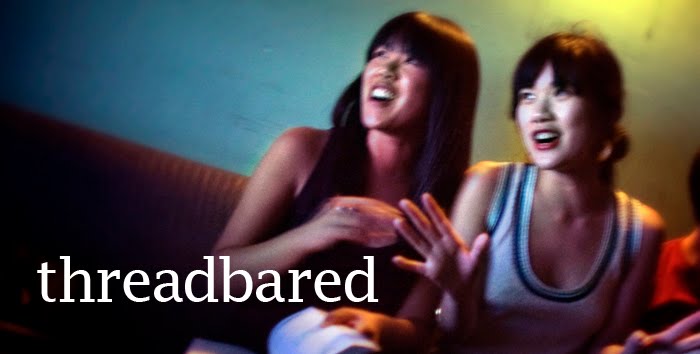 One of my former students, Janel B., sent me to this post called "Don't Sleep on Africa" on the fashionable Livejournal community called black cigarette, and thereby introducing me to, among others, South African photographer Nontsikelelo Veleko and her amazing portraits of Johannesburg stylish street denizens.
One of my former students, Janel B., sent me to this post called "Don't Sleep on Africa" on the fashionable Livejournal community called black cigarette, and thereby introducing me to, among others, South African photographer Nontsikelelo Veleko and her amazing portraits of Johannesburg stylish street denizens.The entire post at black cigarette begins with this brief intervention into the problematically differential distribution of "style:"
Stockholm. Paris. London. New York. Helsinki. Milan. Tokyo.
These seem to be to go-to places when it comes to "street-style" and what's hot in general on most fashion blogs, but I just wanted to share some of the street-style you'll find on the African continent.... South African street style is rarely sleek and chic - it's irreverent, vibrant and daring. It mixes patterns and textures, with echoes of mid 70s style (and just a splash of "geek chic").
(Consider too the fact that Feedshion, which collects "the best street fashion photos from all the greatest street style blogs for your viewing pleasure," happens to feature only street style blogs from the usual suspects and none from South America or Africa. Of course, street style blogs are never accurate snapshots of this construct called "the street" anyway, but that's another post.)
The photo-heavy post, featuring also African designers, is a wonderful contrast to those editorials in American and European fashion magazines whose visual vocabularies for "Africa" are unbelievably narrow and alienating (Galliano, I'm looking at you and your "tribal" fetish figure shoes). The continued refusal to see the African other as coeval (that is, contemporaneous) with the so-called modern observer, most obviously manifested in the designation "tribal chic," betrays the still-haunting presence of colonial aesthetics in Western art and design.
In the photographs found at "Don't Sleep On Africa," we see a much more nuanced postcolonial aesthetics reflecting multiple modernities as well as unalterable histories: these include the multiple imperial enterprises of the "scramble for Africa," but also the circuits of what Paul Gilroy called the "black Atlantic," through which we might look again at these photographs, their performativity and politics of consumption. In doing so, we might find in some of these images a subtle critique of the West's cultural realities, through which those familiar fashionable markers of "tribal chic" (zebra stripes, for instance), when they do appear, are rendered insistently, assuredly modern.
Edited to add additional links supplied by Sociological Images and Racialicious, by way of the LJ community Debunking White.



